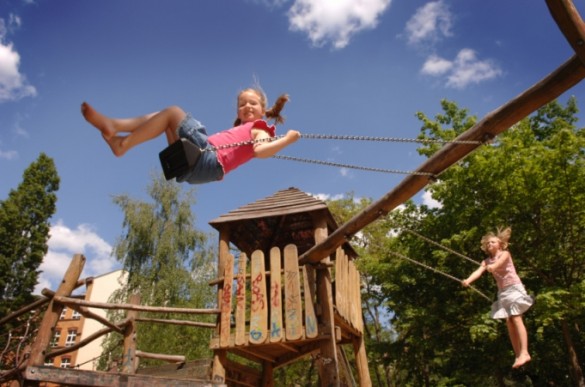
Peer solicitation – a child inviting another to play – can improve reciprocal social interaction among children with autism, according to a Vanderbilt University study released today in the Journal of Child Psychology and Psychiatry.
Researchers studied playground interactions between children with autism and typically developing peers and found the two groups play similarly when engaged in independent play with kids they just met.
While the children with autism initiated and engaged in less play overall than typically developing children, the researchers found that other children can facilitate and increase interactions by simple requests. These findings highlight the pivotal role that peers have in social interaction, noting that it only takes a single child to prompt other children – with or without autism – to interact.
“Most children consider playgrounds a fun place to interact with other kids, but for children with autism, this may be a very challenging and stressful environment,” said lead author Blythe Corbett, Ph.D., associate professor of Psychiatry and Vanderbilt Kennedy Center investigator. “One of the key places we learn about social rules growing up is during play, but if you don’t participate, chances are you’re not going to learn the rules or be motivated to interact with other children.”
Corbett and colleagues studied more than 30 peer interactions in children ages 8-12 on an actual playground by using state-of-the-art technology including four remotely operated cameras and battery-operated microphones. Three children were on the playground for the observations – a typically developing child trained as a research assistant, called a “confederate;” another typically developing child there for play only; and a child with autism.
The confederate was trained to invite the other two children to play and wore an ear microphone in order to receive directions from the researchers, who observed from a nearby lab overlooking the playground.
The stress hormone cortisol was measured through saliva samples taken both at home and several times after the playground interactions to compare the stress level of participants in a typical environment vs. playtime with peers. The children with autism demonstrated elevated stress during social interactions, with higher cortisol levels observed in children who showed less motivation to play with the other children.
“Although children with autism may experience increased stress in social interactions, it was encouraging to see that reciprocal socialization can be facilitated by peer solicitation,” Corbett said. “It all starts with a simple bid to play.”
Work in Corbett’s lab seeks to better understand the unique biological and behavioral profiles in stress and social motivation in order to guide individualized treatment.
This research was funded by the National Institute of Mental Health (Grant No. R01 MH085717).












